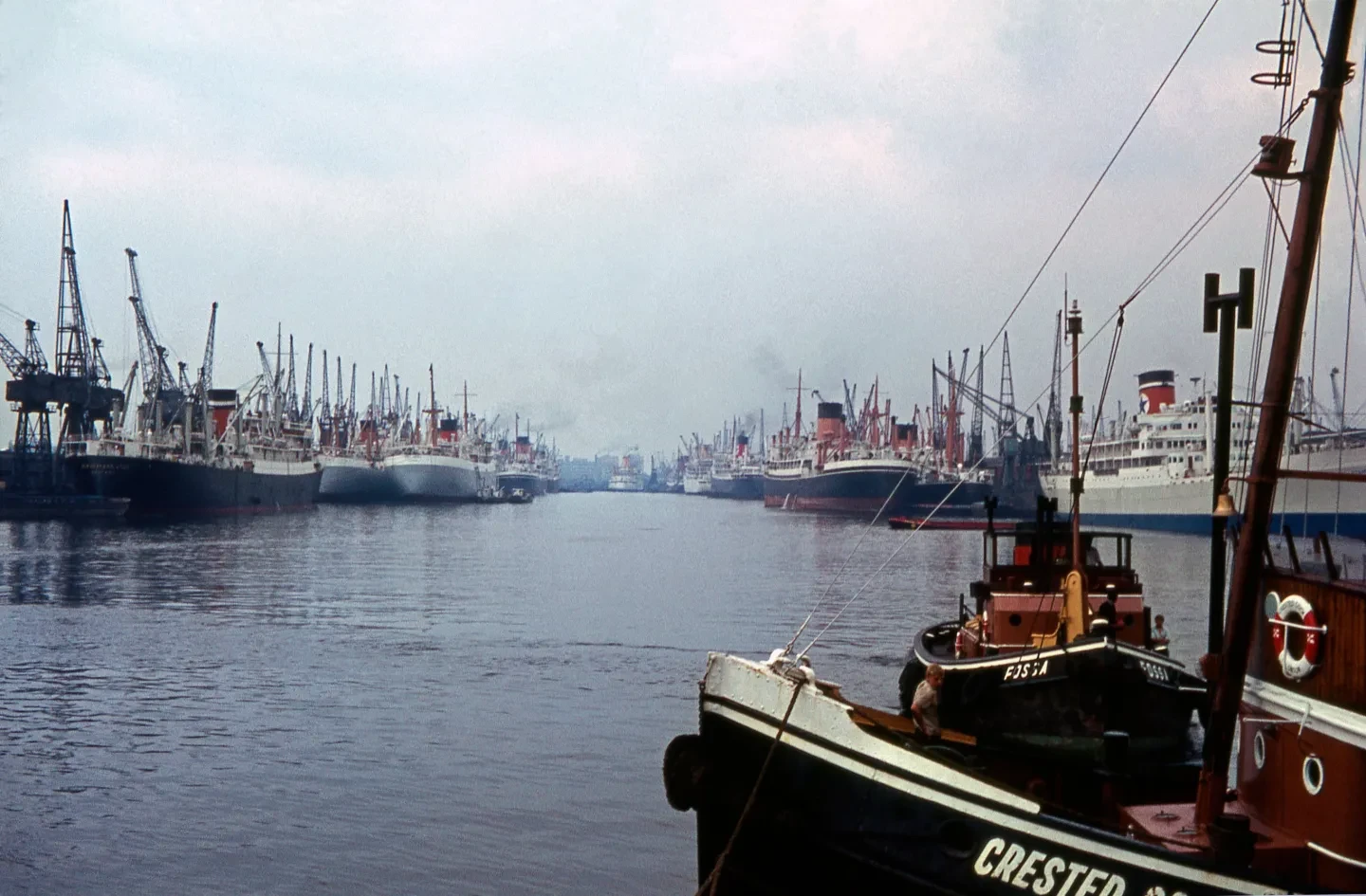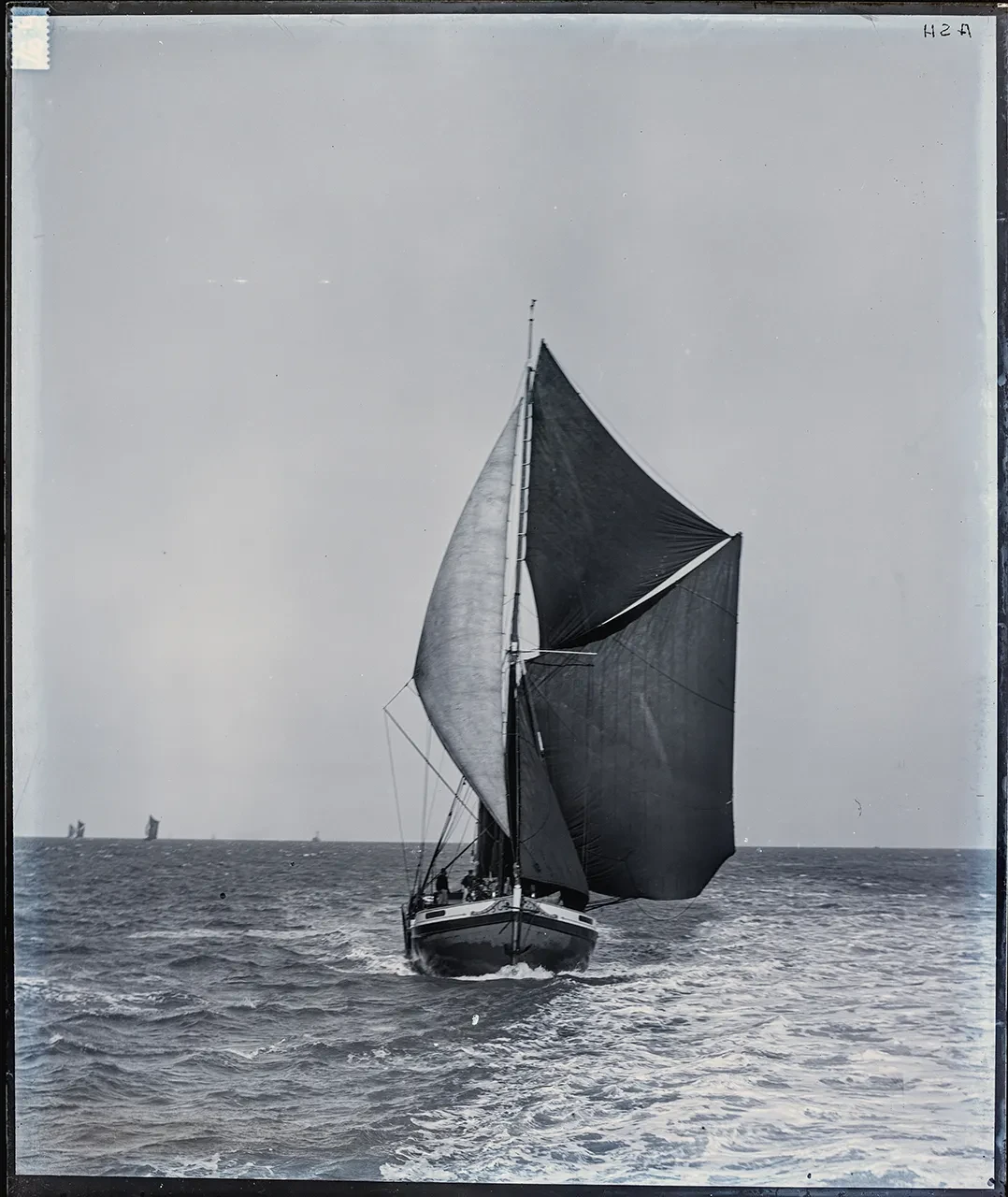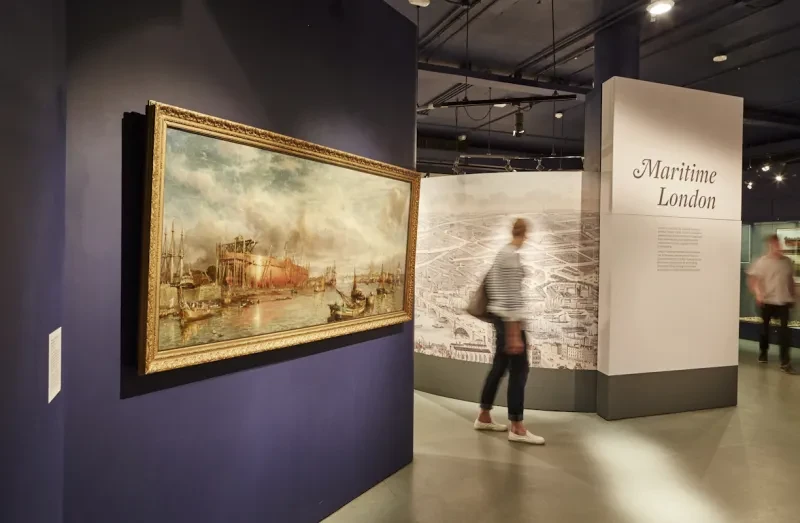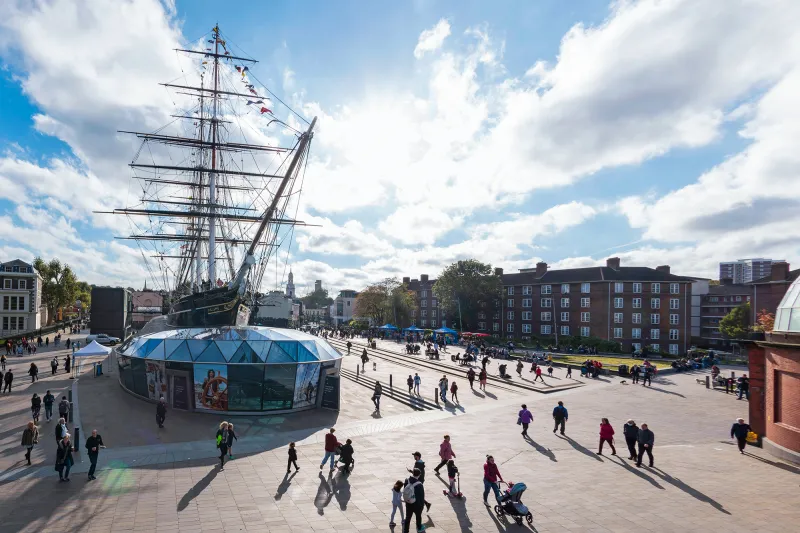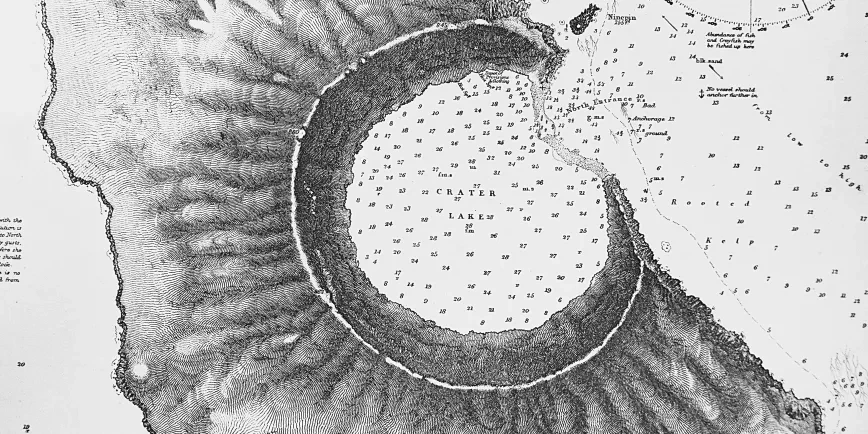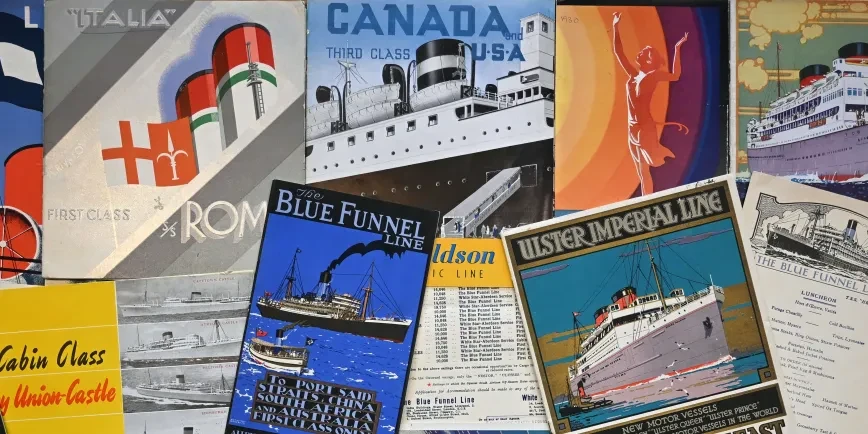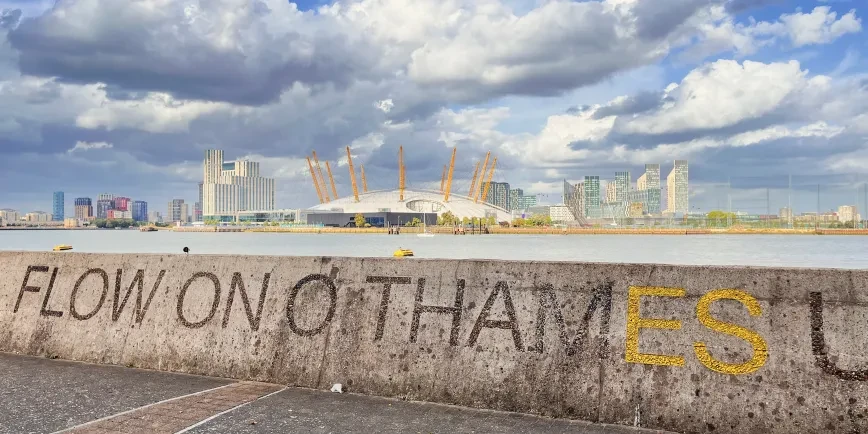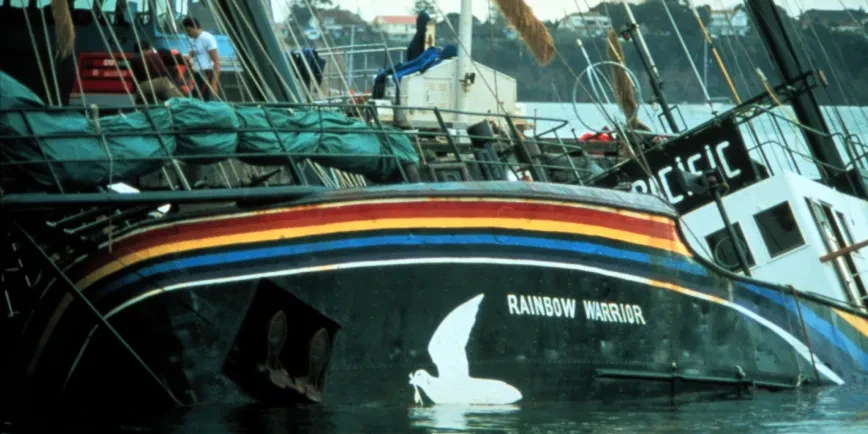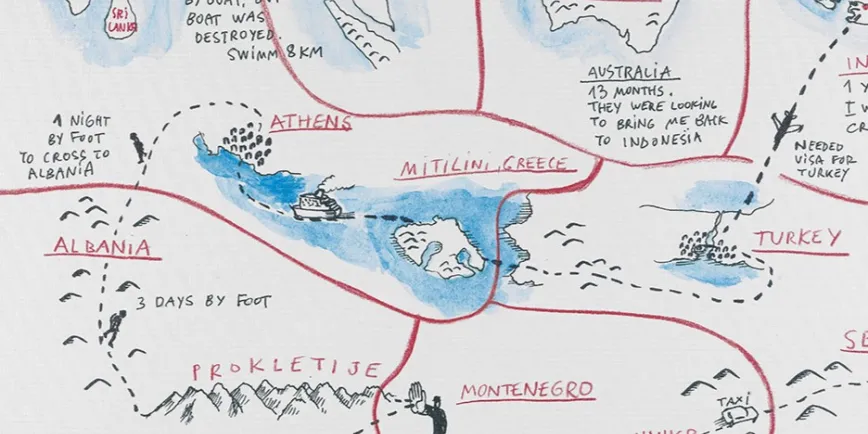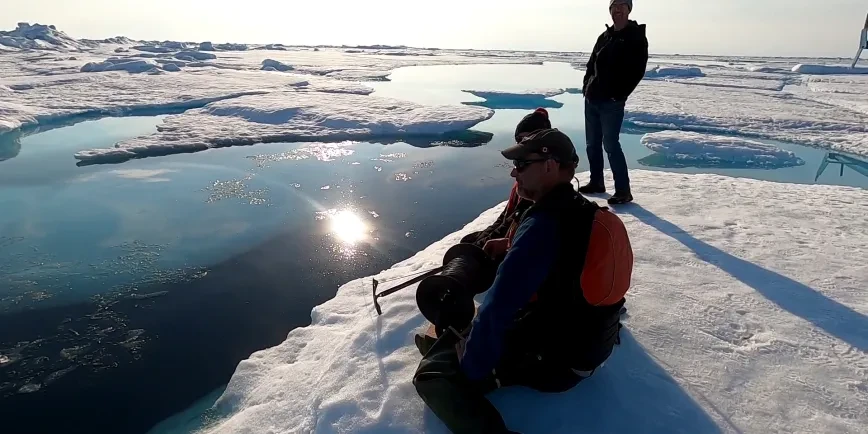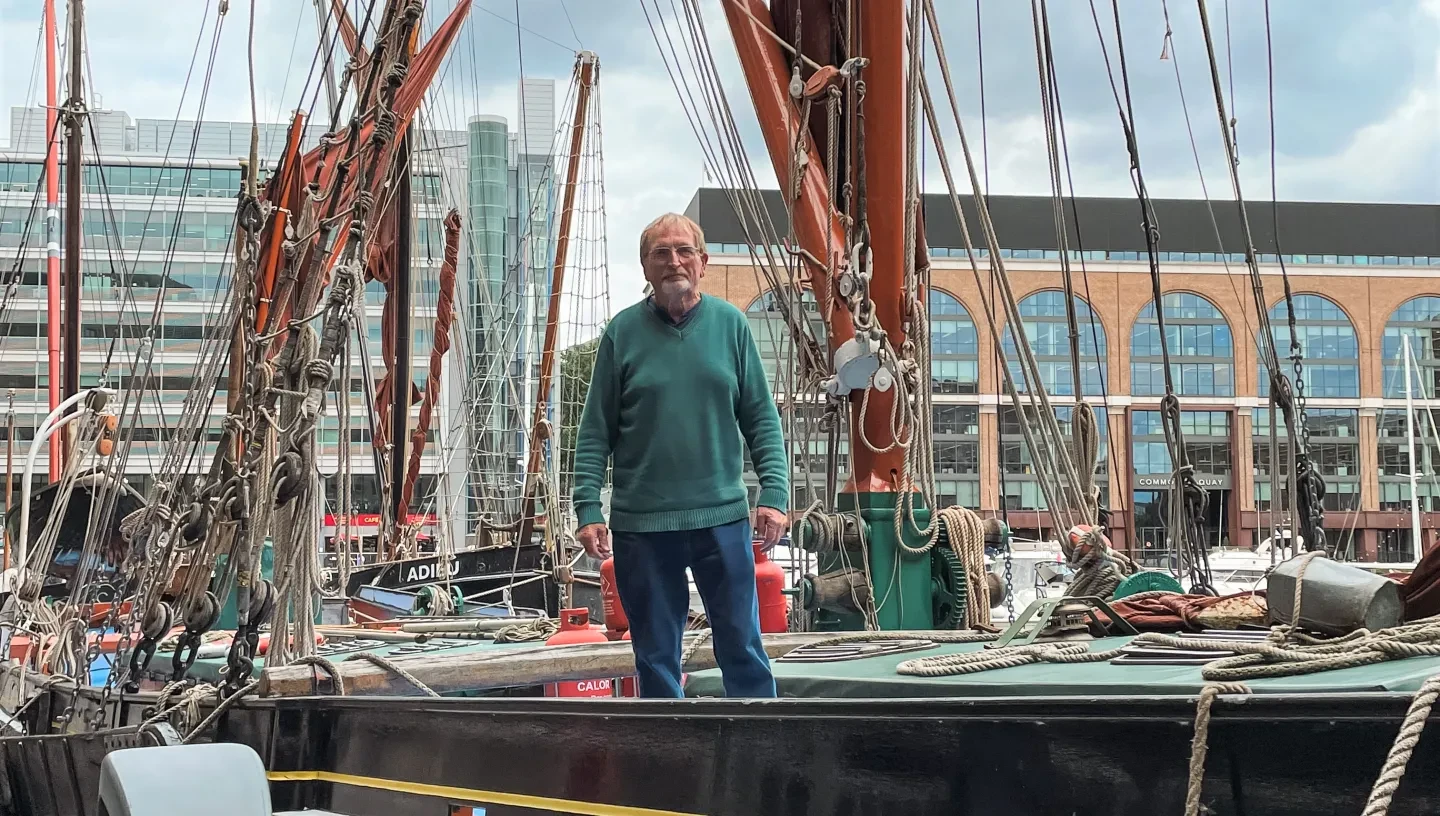
For more than a decade during the 1950s and 60s Gordon ‘Willie’ Williamson transported goods between Ipswich and London.
Working aboard traditional Thames barges, he saw first hand the final years of the Royal Docks as a bustling cargo hub.
‘The Thames was very busy,’ he says. ‘We used to come up to the Royal Docks, and there would be rows of lighters towed by tugs, and we’d have to weave in and out. Loads coming up, loads coming down.’
In 2021 Willie shared his memories with the National Maritime Museum as part of an ongoing oral history project, recording the experiences of people connected to, living or working at sea. Listen to extracts from his story below.
Traffic on the Thames today may be very different, but some aspects of dockside life remain the same. A new photography display at Cutty Sark explores the past and present of London’s docks: find out more and plan your visit.
Thames barges
Thames barges were a familiar sight on the River Thames in the late nineteenth and early twentieth centuries. These flat-bottomed barges transported goods between London and the shallow waters of Essex, Kent and Suffolk. Principally employed as cargo vessels, the largest were capable of carrying up to 300 tons.

Willie was born in 1944, and gained a taste of the barge life early thanks to his family’s maritime connections in Ipswich.
‘My uncle George was Mate on the sailing barge Ethel in 1952 time,’ he says. ‘I was still at school then, so I used to go weekends or holidays and sail with them to London and back.’
He was 15 years old when he was offered his first proper job on board. While his family were pleased – ‘glad to be rid of me!’ – Willie remembers his school being less impressed. Listen to his account below.
As part of a crew of just three, Willie learnt on the job quickly. ‘There was always painting work needed doing, and then when you were out of the dock, there was navigation; bits of chart work and that,’ he says. 'But most of the old boys, they didn't bother too much about navigation with charts and things, because that's what they'd done all their life, and they just jogged along.’
The best part was when he was asked to take the helm.
‘The skipper used to say, “Hang on the wheel” sort of thing, and he'd be [off] doing other things. The first barge I was on, there was the skipper, and his brother-in-law was the mate, and I was the third hand. So the mate would stay in the wheelhouse with you,’ Willie recalls.
And what important task was the skipper off to do?
‘They had some little bakery things come out in the ‘50s – a Mary Baker cake – and he used to buy these packets of mixture, and he'd say, “Right, hang on here, I'm going to go and make a cake!”’
London's docks during the 1960s
Sailing out of Ipswich, Willie initially worked for firms transporting cargo such as barley and animal feed.
‘Normally we'd come from Ipswich up as far as Gravesend first day, and lay there overnight, anchor at Gravesend, and the next morning heave the anchor up and come up to the Royal Docks – which is now London Airport.’
The barges Willie sailed on were fitted with auxiliary engines as well as sails. ‘With an engine, when the tide is running hard one way you can still keep going. That made a lot of difference on some of the jobs,’ he says. ‘Let's say they want you in London for tomorrow morning's work; there's a good chance you would be there for tomorrow morning's work. I mean, when that was just sail you relied on the wind, and if the wind died away you weren't there.’
Upon arrival, barges would have to wait to be called to load or unload cargo, finding space where they could among the larger ships.

‘When we came in through the lock gates, wherever our ship was you had to go and report to the shipworker. So we used to go over to where the ship was, tie up on the quay wherever you could get and go and see the shipworker. And he'd say, “Well, I don't want you ‘til tomorrow or the next day”. And there'd be certain places in the dock you could just go and lay and wait.’
Listen to a typical day’s work below.
Life on the River Thames
Occasionally they would arrive to discover that the ship they were due to meet hadn’t arrived, giving Willie and the crew time to relax. He recalls taking the old Woolwich steam ferry across from the Royal Docks to visit the pubs or the cinema.
At other times, they’d simply muck about.
‘Well, we were sort of mad then, weren't we?’ he says. ‘Somebody would rig a tyre up on the derrick – where you put the ship's boat on – you’d get a car tyre, tie it on there and swing about on the tyre and that.’
While the Thames was a lively place to work, the river itself was not in the best of health.
‘Coming up to London, once we got into the Thames there was an awful smell,’ Willie says. ‘And that was the stench from the state of the River Thames.’ Listen to the full extract below.
‘The river is a lot cleaner than it was. Definitely,’ Willie says.
The end of London's Royal Docks
Activity in London’s docks reached its peak in 1964, with over 61 million tons of cargo passing through according to the Port of London Authority. However, the increase in ship size meant that cargo handling increasingly moved downriver to Tilbury.
For Willie, the transition initially meant shorter journeys and more opportunity.
‘A lot of stuff went to Tilbury Dock,’ he says. ‘From our point of view, from Tilbury Dock up to King George Dock was another three hours, so sometimes [the move to Tilbury] was better for us.'
‘We have actually done two and three freights a week from there,’ he continues. ‘We'd come up from Ipswich, which to Tilbury would take you about eight or nine hours. We'd load and sometimes we'd come up one day and that night go back to Ipswich.’
Footage of London Docks filmed during the 1970s
The future of Thames barges?
Willie rose to skipper in 1963 and continued to work on barges until 1970, when he came ashore and secured a job as a dockworker in Ipswich.
He retained his connections to barge life however, becoming a skipper for the Thames Barge Sailing Trust and taking passengers on trips around the Thames Estuary.
‘There are no barges doing cargo as such,’ Willie says now, and he is unsure about the long-term future of these historic vessels. ‘They cost so much money to repair and keep them going. There's one or two who are Trust [owned] now, so they're actually getting money in and keeping going, but they're finding that hard.
‘And I think that will come to the time when people will buy barges as houseboats: as a home. Because you can get a barge as cheap as they get a big flat in London.'
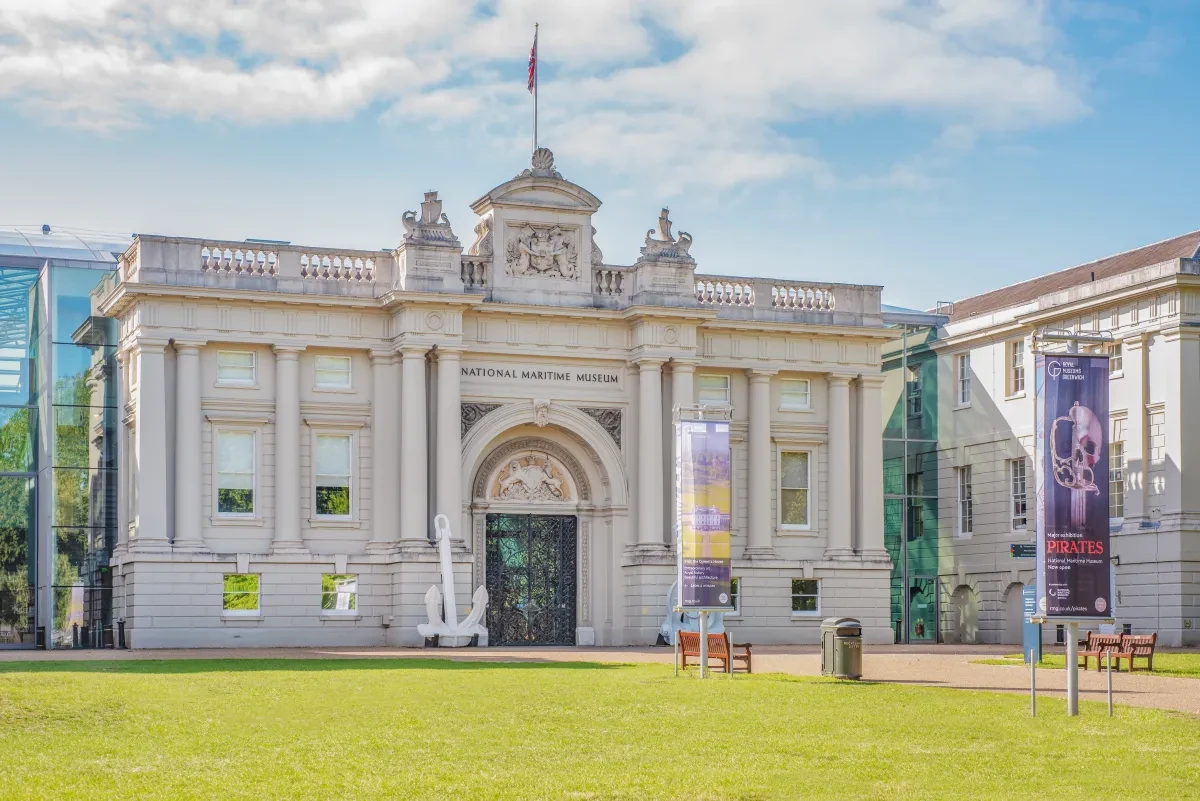
The recordings featured in this story are part of an ongoing oral history project at the National Maritime Museum. The project intends to record people's first person experiences at sea and memories of maritime events. If you think you may have a story to share, email research@rmg.co.uk. Please note that the team is small so may not be able to respond immediately.
Our relationship with the sea is changing. Discover how the ocean impacts us – and we impact the ocean – with the National Maritime Museum.

